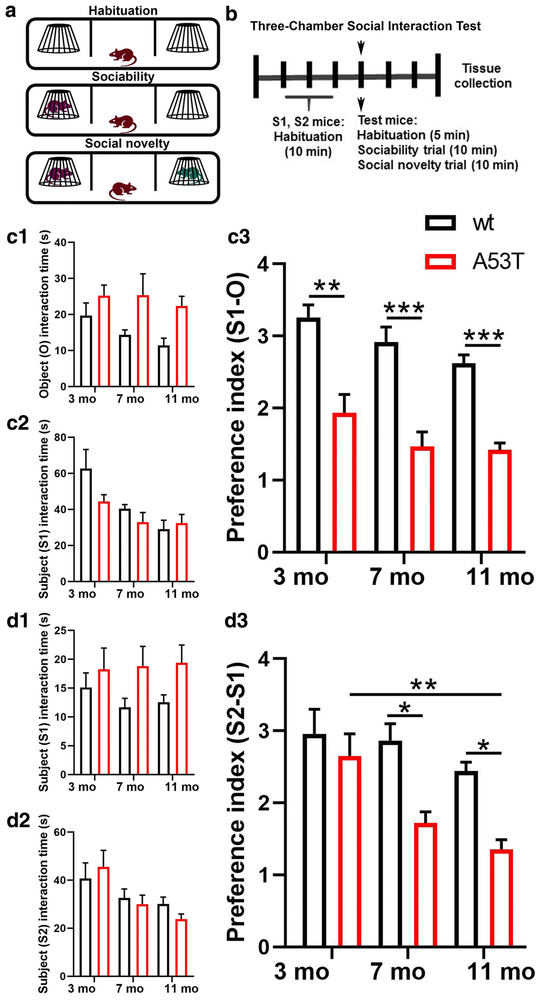Figure 1:
Sociability and social memory in male 3, 7, and 11 months old wt and A53T mice. Schematic representation of the three-chamber social interaction test (3CSIT) (A). The timeline of the experimental procedure (B). Mice were subjected to a 3CSIT. Three days following 3CSIT, mice were perfused and brains were collected. Sociability trials: Time test mice spend interacting with empty cup (O) (C1) and stranger 1 (S1) mouse (C2). A reduced (S1-O) preference index can be observed in A53T mice compared to wt animals at 3, 7 and 11 mo of age (C3). Social memory trials: Time the test mice spend interacting with S1 mouse (D1) and stranger 2 (S2) mouse (D2). A reduced (S2-S1) preference index can be observed in A53T mice compared to wt animals at 7 and 11 (D3). Further, aging induced decrease in (S2-S1) preference index can be observed between 3 and 11 mo A53T mouse (D3). (3 mo, n=8/group; 7 mo, n=7/group; 11 mo, n=8/group; two-way ANOVA, Sidak; *p<0.05, **p<0.01, ***p<0.005)

